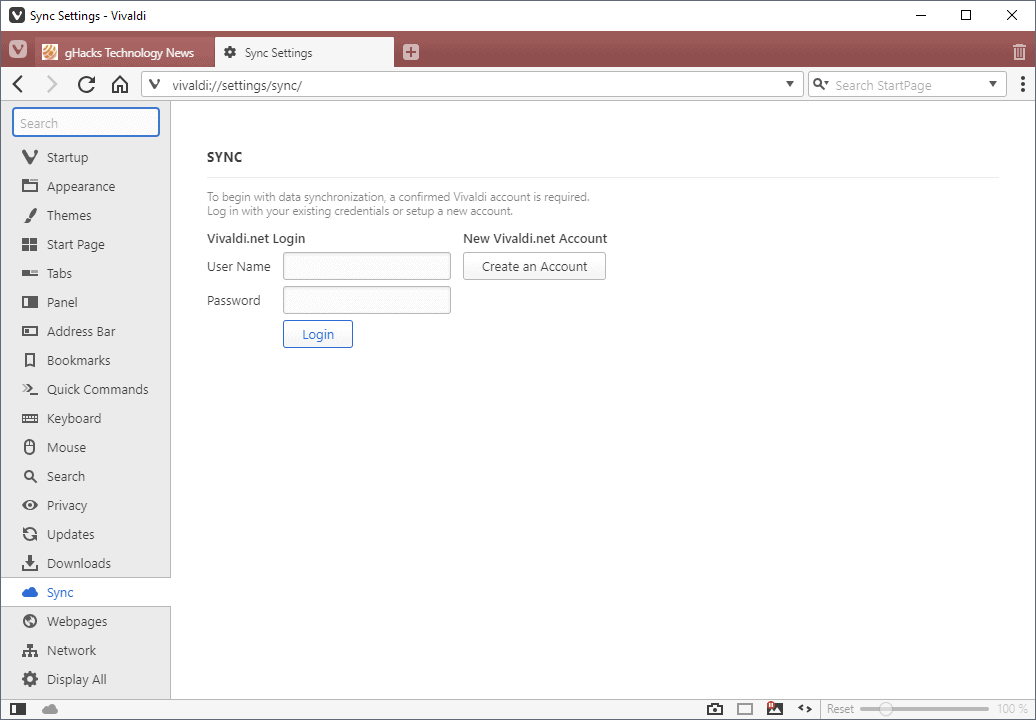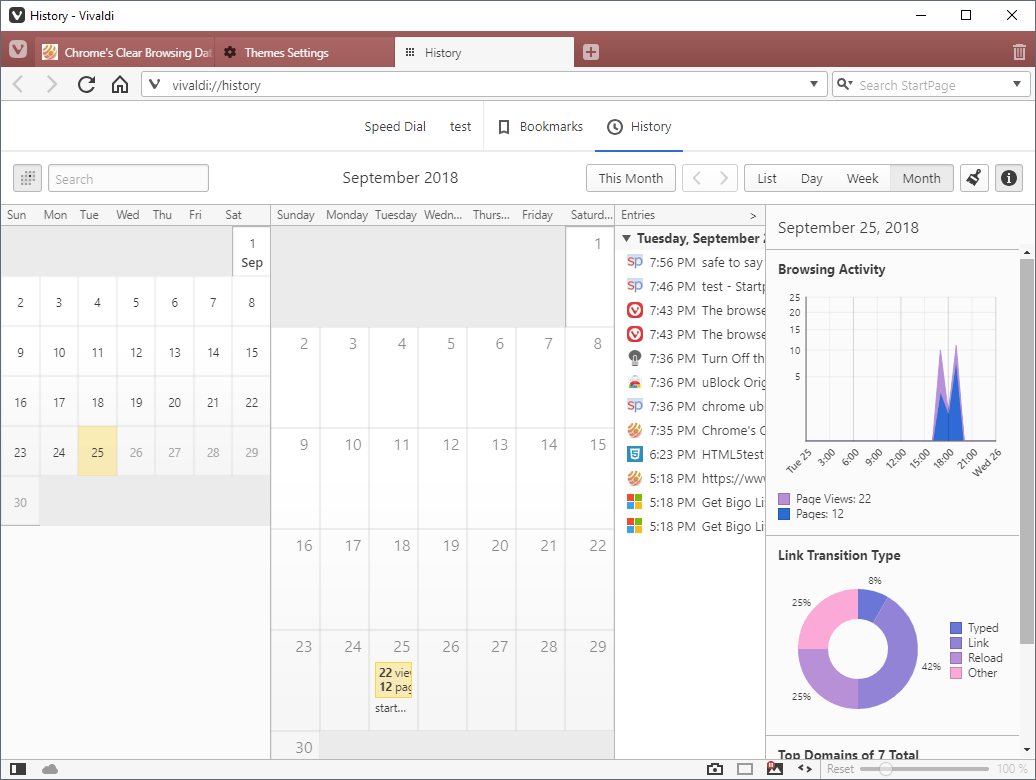by Martin Brinkmann on September 26, 2018 in Internet – Last Update: September 26, 2018 – 12 comments
Vivaldi Technologies AS launched the much anticipated Vivaldi 2.0 web browser on September 26, 2018 to the public.
The third major release of Vivaldi after the initial beta version of the web browser and Vivaldi 1.0 in 2016 marks a new milestone for the company that is led by the former Opera CEO Jon von Tetzchner.
Tip: We have updated our review of the Vivaldi web browser to reflect all recent changes up to version 2.0. In this guide, I’ll be looking at major features only.
Vivaldi 2.0 is a milestone release especially if you compare it to version 1.0 released in 2016. The new version incorporates all the changes that updates introduced since 2016 and all the latest changes made to the browser since the release of version 1.15.
While that means lots of new features and improvements, especially for users who don’t use version 1.15 or another recent version, it means that users who run a recent version of Vivaldi won’t see lots of changes when their version gets updated to version 2.0.
Vivaldi 2.0
Vivaldi 2.0 supports a large number of features and improvements that were not part of Vivaldi 1.0. Existing Vivaldi installations should pick up the update to version 2.0 automatically. Users can initiate a manual check for updates by selecting Vivaldi > Help > Check for updates.
Downloads are also provided on the official website.
Major new features and improvements include Sync functionality, the introduction of Delta updates, and new user interface and feature customization options.
Sync

Vivaldi Technologies AS introduced Sync capabilities recently in the Vivaldi browser. Sync functionality was a much requested user feature next to a Mail client and mobile versions of Vivaldi. While the latter two have not been released yet, Sync is integrated.
Sync is rather easy to set up in the Vivaldi browser. What you need to do is the following:
- Open the Vivaldi Sync settings by loading the following internal resource: vivaldi://settings/sync/. You may also click on the cloud icon in the status bar if it is displayed to open the resource directly.
- If you don’t have a Vivaldi account yet, select “Create an Account” and follow the instructions on-screen to create a new account.
- Type your Vivaldi username and password to log in and enable Sync functionality.
Vivaldi users may sync a variety of data bits including passwords, bookmarks, settings, extensions, or notes. Sync in Vivaldi uses end-to-end encryption and no third-party servers.
Customization Improvements

Customization is Vivaldi’s greatest strength in my opinion. It is a main distinguishing factor when compared to Chrome or Microsoft Edge, and even browsers that support a good degree of customization options as well such as Firefox or Opera.
A look at the unique display of the Browsing History page is all that is needed to highlight that Vivaldi is different — and in a good way.
The page displays a calendar, statistics and offers lots of useful options to users. Want to search across the entire history, display the pages of any given day, or check when you used the browser in a month? You can do that on that page and a lot more.
Users who want just the core information get that as well. Just open the sidebar and select the History panel there to display the browsing history in the way all other browsers display it (chronologically).
What else is new?
- Vivaldi’s Tab Tiling feature, which allows you to display multiple sites in a single tab, supports easy resizing of tiles now to adjust the size of any site displayed as a tile.
- Set the minimum width for the active tab in vivaldi://settings/tabs/
- New Welcome Page that acts as an introduction to Vivaldi and some of its features.
- Web Panels, the option to add any website as a panel in Vivaldi’s sidebar, may float now so that they are displayed on-top of the actual loaded webpage.
- New Window sidebar panel to improve tab management. Easy tab reordering using drag and drop, and tab loading.
- Notes sidebar panel supports markdown.
- Downloads sorting.
- Native screen capturing built-in.
- Custom Speed Dial thumbnails.
- Delta updates to reduce the size of updates and to deliver updates faster to users.
- Themes can be scheduled, e.g. switch to a dark theme at night and a light theme at day.
- Tab Cycling features a list viewer. Note that you need to enable the Tab Cycler and the list view mode by loading vivaldi://settings/tabs/.
Here is a video that Vivaldi published to celebrate the launch of Vivaldi 2.0.
Closing words
The Vivaldi web browser has come a long way since the release of the first preview version and first stable version in 2016.
The team, as small as it is when you compare it to development teams of Firefox, Chrome, or Microsoft Edge, improved Vivaldi in numerous meaningful ways and managed to create a browser that is pleasantly different thanks to the wealth of personalization options and switches it supports.
While there is certainly still work to be done, think mobile clients for a true cross-platform experience, Vivaldi is offering one of the greatest experience on the desktop already thanks to the browser’s huge list of customization options, personalization features, and other features that the team integrated natively.
I’m already exited what the team has in Store for Vivaldi 3.0.
Now You: What is your take on Vivaldi 2.0?